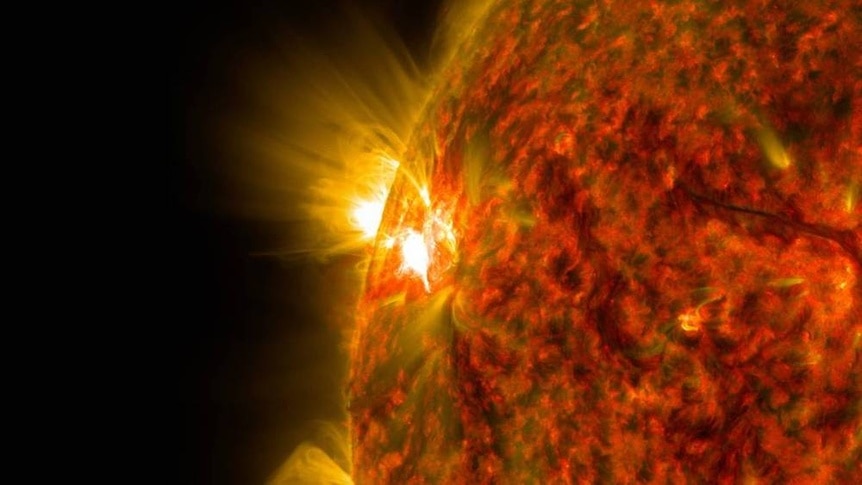The Sun Unleashes Even More Powerful Solar Flares as Solar Maximum Continues
And there are no signs of stopping.
In the 2006 disaster flick Solar Attack, a combination of powerful solar flares, coronal mass ejections (CMEs), and a buildup of methane in the atmosphere threaten to turn the planet into a literal ticking time bomb. Fortunately, our real-world greenhouse gas problem (while real and serious) hasn’t yet reached such dire straits. But severe solar weather still impacts us.
As the Sun reaches the crest of solar cycle 25 (the 25th 11-year cycle observed by astronomers), it’s going through a characteristic increase in surface activity, and we can feel some of those effects even from 93 million miles away.
The Sun Keeps Unleashing Solar Flares and Coronal Mass Ejections
Back in May 2024, a series of powerful solar blasts sent CMEs careening into the atmosphere, sparking geomagnetic storms, radio blackouts, and incredible auroral displays all over the world. Even if you missed the days-long storm, you’re sure to have plenty of opportunities over the coming months and years, as the Sun isn’t planning to quiet down anytime soon.
As much as it seems like an unchanging orb of heat and light, the Sun is constantly in motion and goes through regular, predictable cycles. Every 11 years, the Sun experiences a marked increase in sunspot activity on the surface. Those sunspots are the fingerprints of increased electromagnetic activity and building tension in the Sun’s magnetic field.
Eventually, the Sun’s magnetic poles will swap places, trading north for south, and the whole cycle will start over again. In the meantime, we’re being treated to the once-in-a-decade (more or less) temper tantrum resulting from the Sun’s twisted guts.
For More on Solar Activity:
Powerful Solar Storm Triggers Radio Blackouts Across Pacific Region
What Were Those Weird Red Spots During the 2024 Solar Eclipse?
Understanding the Sun's Solar Cycle and Coronal Mass Ejections (CMEs)
Following the big storm back in May, the Sun shot off an X8.7 solar flare which was, fortunately, not pointed toward the planet. For context, the weakest flares are B class, followed by C class flares. Those tiny solar bursts are too weak to measurably impact the planet, but they get quite a bit stronger. Next on the scale are M class flares followed, finally, by X class flares. Each letter on the scale is 10 times as powerful as the letter before it, so scientists specify the strength by tacking on a number. If, for example, scientists measured a flare twice as strong as a typical M class flare, they would designate it M2.
This particular flare was 8.7 times as strong as an ordinary X class flare, which is 10 times stronger than an M class flare, and so on. Importantly, X class flares get stronger than X10 and, instead of bumping them to another letter, astronomers just keep stacking numbers. The most powerful flare ever recorded burned out the sensors measuring it at about X17, back in 2011. Later study determined its true power at approximately X45.
This solar cycle hasn’t ramped up to those levels and it probably won’t. Astronomers predict this solar maximum will be weaker than average, but that hasn’t stopped the Sun from going wild the last couple of months. On June 8, scientists measured the strongest solar radiation since an outburst seven years ago. Toward the end of the month a series of flares caused moderate radio blackouts, and the month closed out with a G4 severe geomagnetic storm.
Much of that activity is coming from roughly the same spot on the Sun’s surface. The Sun rotates roughly every 27 days (there is some variability based on latitude), bringing active sunspot regions into and out of view every couple of weeks, like a vast lighthouse firing flares into the abyss.
Because solar maximum varies in intensity from cycle to cycle and is identified by a peak in sunspot activity, we only know it’s happened after it’s over. But based on the increased and ongoing solar activity and predictions based on previous solar cycles, it seems like we’re probably in it.
Solar Attack is streaming now on Peacock.
















































